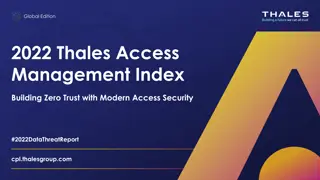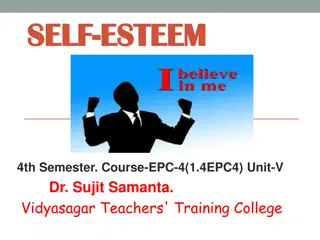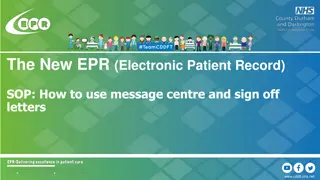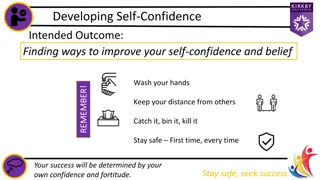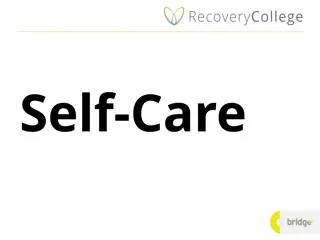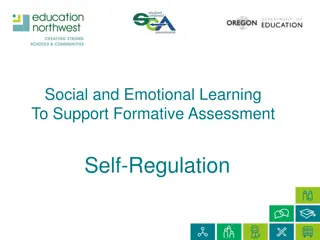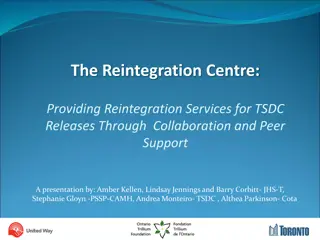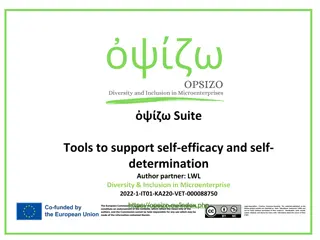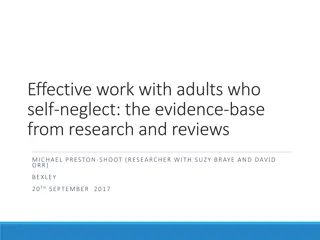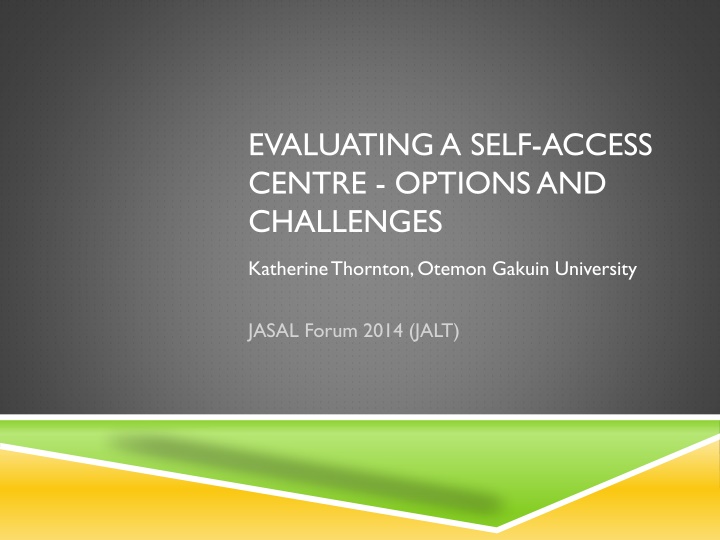
Evaluating a Self-Access Centre: Options and Challenges
This resource explores the importance of evaluating self-access centres (SACs), covering reasons to evaluate, what to evaluate (efficiency, effectiveness), how to evaluate (quantitative and qualitative methods), and challenges faced in evaluating SACs. It provides insights on promoting learner autonomy, meeting institutional goals, and securing funding for SACs. Examples and practical tips are included to aid in the evaluation process.
Download Presentation

Please find below an Image/Link to download the presentation.
The content on the website is provided AS IS for your information and personal use only. It may not be sold, licensed, or shared on other websites without obtaining consent from the author. If you encounter any issues during the download, it is possible that the publisher has removed the file from their server.
You are allowed to download the files provided on this website for personal or commercial use, subject to the condition that they are used lawfully. All files are the property of their respective owners.
The content on the website is provided AS IS for your information and personal use only. It may not be sold, licensed, or shared on other websites without obtaining consent from the author.
E N D
Presentation Transcript
EVALUATING A SELF-ACCESS CENTRE - OPTIONS AND CHALLENGES Katherine Thornton, Otemon Gakuin University JASAL Forum 2014 (JALT)
OUTLINE Why evaluate? What to evaluate? How to evaluate? Challenges in evaluating SACs An example: English Caf at Otemon
WHY EVALUATE A SELF-ACCESS CENTRE? To check whether the centre is meeting learner needs Identify areas for improvement Provide feedback for staff (job satisfaction) To check whether the centre is meeting institutional goals To account for existing funding To secure further funding Promote understanding and support for SALL among stakeholders
WHAT TO EVALUATE? Efficiency & Effectiveness (Gardner & Miller, 1997) Efficiency Quality of management decision-making process & systems Value for money staffing Value for money equipment & resources
WHAT TO EVALUATE? Effectiveness (Learner gain (Morrison, 2005)) Whether the SAC is facilitating language learning Whether the SAC is developing learner autonomy
NARROWING THE EVALUATION FOCUS Learner autonomy? Value for money? Usage patterns? Linguistic gain? bums on seats ? Mission Statement Stakeholder requests
HOW TO EVALUATE? Quantitative Numbers: Head counts, usage data, borrowing records Surveys Proficiency test results Qualitative Observations (usage patterns, interactions) Interviews (learner perceptions of gain, opinions of SAC) Focus groups (users, teachers, management staff) Document analysis (SAC reports, learning journals)
CHALLENGES FOR EVALUATION Course Evaluation SAC Evaluation Focus on linguistic gains Focus on learner autonomy Finite (homogenous?) group of learners Fluid-user base, many non-regulars Students easily accessible Difficult to access users Control group often possible No control group Controlled learning task Multiplicity of learning opportunities Teacher-directed task Imposition on learners autonomy Some control over variables Little control over variables
PRESENTING RESULTS OF EVALUATION Share with Management Staff Users Ways to share Report Presentation Newsletter Noticeboards
AN EXAMPLE: ENGLISH CAF AT OTEMON Otemon Gakuin University Opened April 2013 Around 40 70 users per day Voluntary usage policy No integration with curriculum
FOCUS OF EVALUATION For university management: Usage patterns and statistics Mission statement aims: Student perceptions of impact on Attitudes to English/International Exchange English proficiency Learner autonomy
USAGE RECORDS Language use Purpose User head count per koma Space usage per koma
MEASURING E-COS IMPACT Mission Statement Foster positive attitudes towards the learning of English Develop students English language proficiency Foster language learner autonomy and life-long self-directed learning skills Generate interest in study abroad and cultural exchange programmes Nurture intercultural awareness and a sense of global citizenship Instrument
MEASURING E-COS IMPACT Mission Statement Foster positive attitudes towards the learning of English Develop students English language proficiency Foster language learner autonomy and life-long self- directed learning skills Generate interest in study abroad and cultural exchange programmes Nurture intercultural awareness and a sense of global citizenship Instrument Surveys, interviews Observations, self-reports (survey), Users TOEIC scores/class grades over time. Advising session discourse analysis (over time). Survey, interviews. Study abroad applications of E-CO users, cultural exchange event attendance Survey, interviews (self-reports)
Beware! Correlation is not causation! ?
CONCLUSION SAC Managers need to: Build accountability into recording systems Have a clear focus for SAC evaluation Use a variety of instruments Be creative! Share results with stakeholders Act on findings to improve services
THANK YOU! ANY QUESTIONS? thornton.katherine@gmail.com
REFERENCES Gardner, D. & Miller, L. (1997) Establishing self-access. Cambridge: Cambridge University Press. Morrison, B. (2005). Evaluating learning gain in a self-access language learning centre. Language Teaching Research, 9, 3, 267-293


